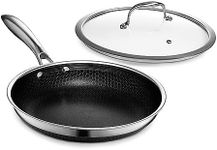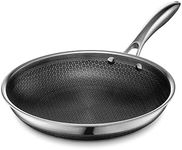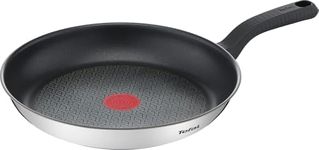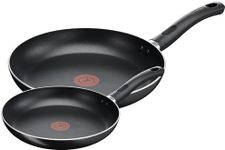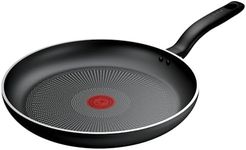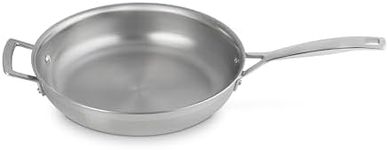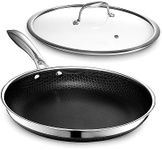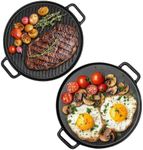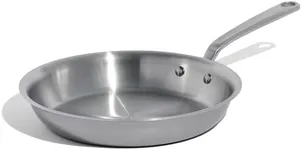Buying Guide for the Best Frying Pan
Choosing the right frying pan can significantly enhance your cooking experience. The right pan will not only make cooking easier but also improve the taste and texture of your food. When selecting a frying pan, consider the type of cooking you do most often, the kind of stove you have, and how much maintenance you're willing to perform. Understanding the key specifications will help you make an informed decision that suits your cooking style and needs.MaterialThe material of a frying pan affects its heat conductivity, durability, and maintenance. Common materials include stainless steel, cast iron, non-stick, and copper. Stainless steel is durable and resistant to rust but may not conduct heat as evenly as other materials. Cast iron retains heat well and is excellent for searing but requires regular seasoning to maintain its non-stick properties. Non-stick pans are easy to clean and great for low-fat cooking but can wear out over time. Copper pans offer excellent heat conductivity but require more maintenance to prevent tarnishing. Choose a material based on your cooking habits and willingness to maintain the pan.
SizeThe size of a frying pan is typically measured by its diameter, ranging from small (8 inches) to large (14 inches or more). A smaller pan is ideal for single servings or small kitchens, while a larger pan is better for cooking meals for a family or when you need more cooking surface. Consider the number of people you usually cook for and the types of dishes you prepare when selecting the size of your frying pan.
WeightThe weight of a frying pan can influence how easy it is to handle and how well it retains heat. Heavier pans, like those made from cast iron, retain heat better and provide even cooking but can be cumbersome to lift and maneuver. Lighter pans are easier to handle but may not distribute heat as evenly. Consider your strength and comfort level when handling cookware, as well as the type of cooking you do, to determine the right weight for your frying pan.
HandleThe handle of a frying pan affects its comfort and safety during use. Handles can be made from various materials, including stainless steel, silicone, and plastic. Stainless steel handles are durable and oven-safe but can get hot during cooking. Silicone and plastic handles stay cool to the touch but may not be oven-safe. Consider how you plan to use the pan and whether you need it to be oven-safe when choosing a handle type.
Compatibility with CooktopsNot all frying pans are compatible with every type of cooktop. Some pans work well on gas stoves but may not be suitable for induction cooktops. Induction-compatible pans are usually made from magnetic materials like stainless steel or cast iron. If you have an induction cooktop, ensure the frying pan is labeled as induction-compatible. Consider your current cooktop and any future changes when selecting a frying pan to ensure compatibility.
Non-stick CoatingNon-stick coatings make frying pans easier to clean and require less oil for cooking, which is ideal for low-fat diets. However, non-stick coatings can wear off over time and may not be suitable for high-heat cooking. If you prefer easy cleanup and low-fat cooking, a non-stick pan might be right for you. However, if you often cook at high temperatures or need a pan for searing, consider a pan without a non-stick coating.
